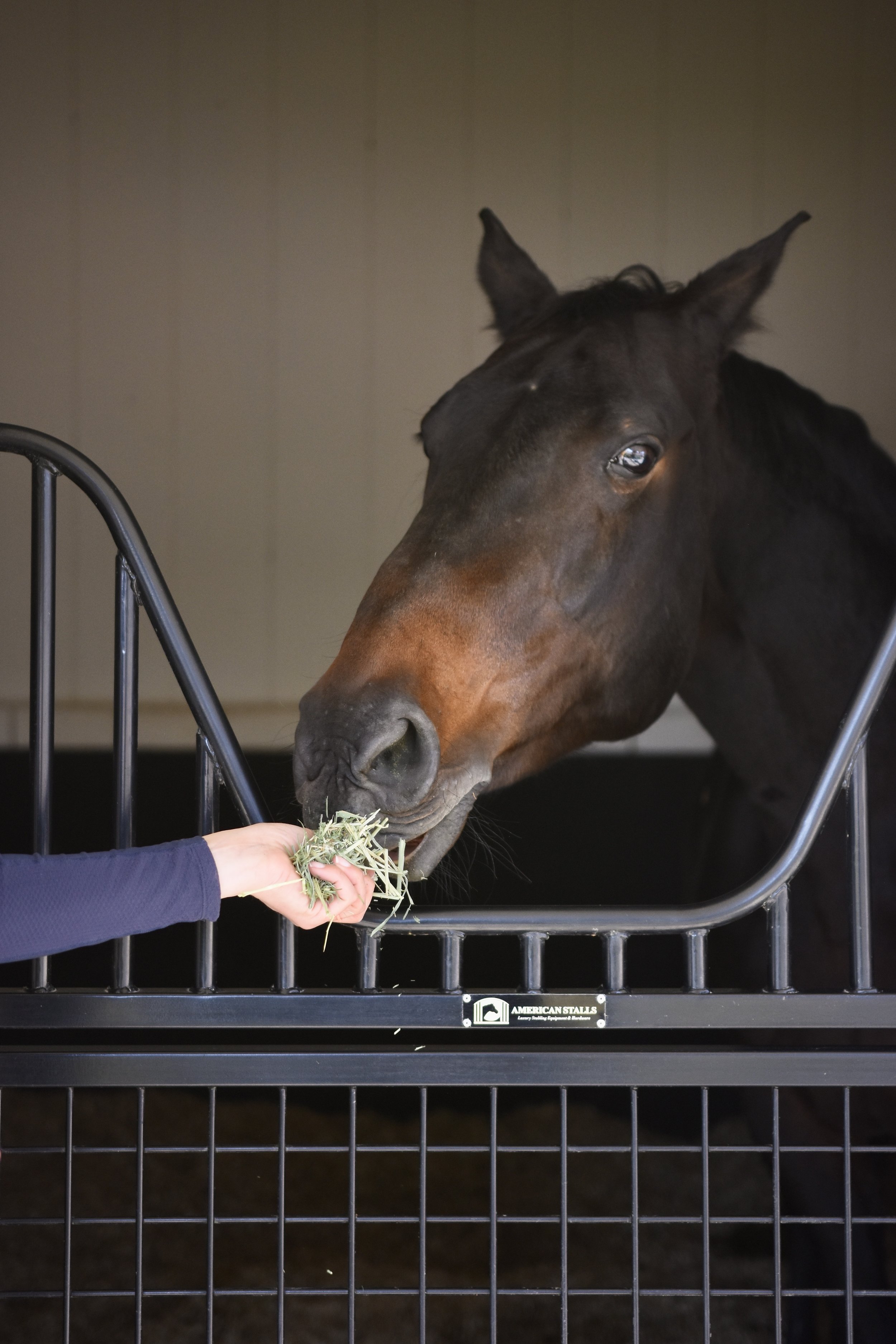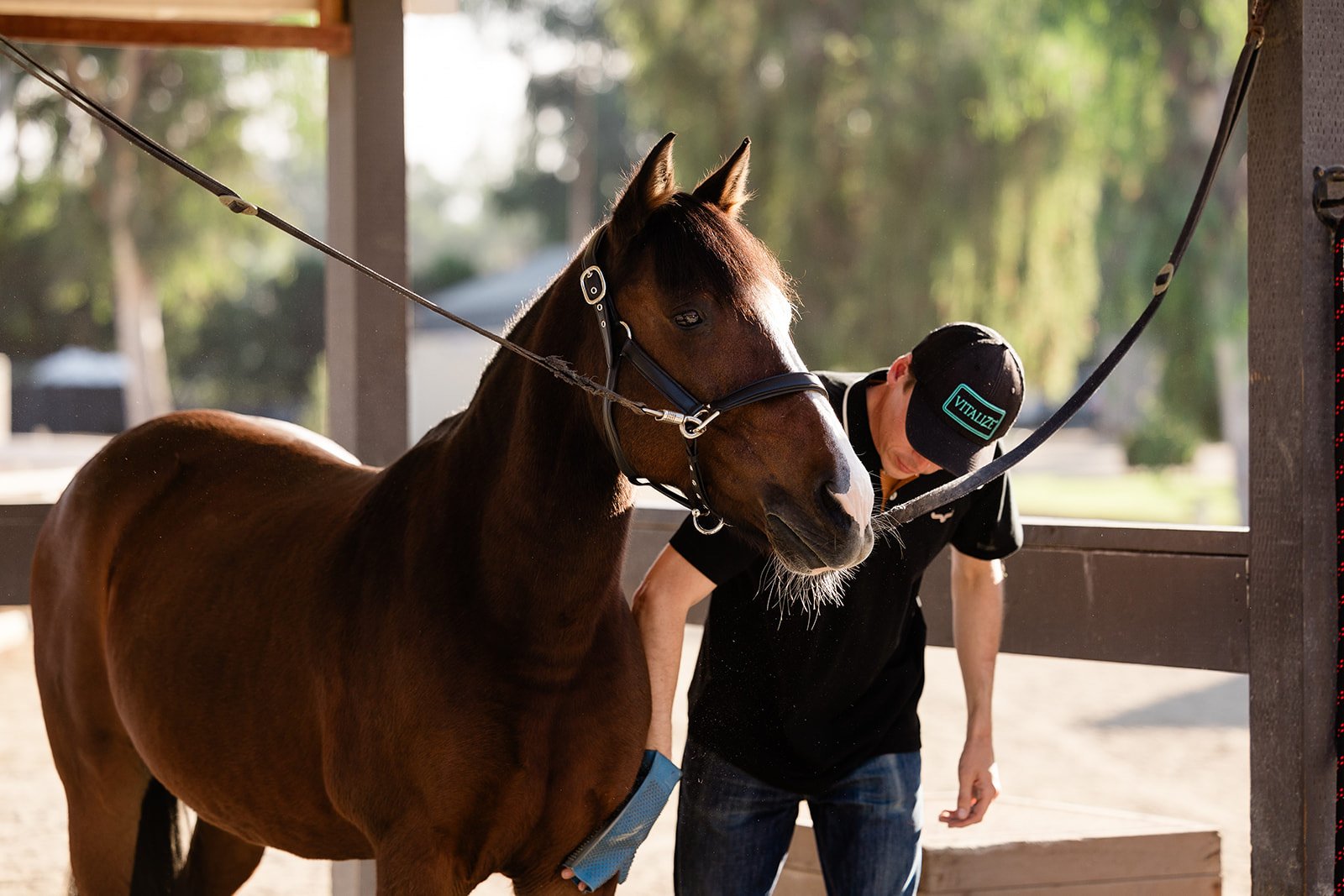Building to Boost Performance
How Smart Design Can Give Trainers an Edge
Interview by Lindsay Hunter
Photography credits: Evan Donadt, Jeni Jo Photography, Julie Davidson, Kayla Norene
When it comes to excelling at the Grand Prix level, it’s not just about talent and technique; it’s also about the environment in which a rider trains. For Ashley Donadt, a celebrated trainer and accomplished FEI dressage rider, the design of the equestrian facilities she calls home plays a pivotal role in her success. From carefully crafted arenas to thoughtfully designed stabling, every element of a facility influences her training routines, horse welfare, and ultimately, competition performance.
We sat down with Ashley to explore her perspective on how a well-designed facility can enhance focus, improve horse-and-rider connection, and support peak performance. Her insights offer a fascinating glimpse into the synergy between elite sport and thoughtful design, emphasizing that world-class results require world-class spaces.
Natural Light and Ventilation: How important are lighting and airflow in maintaining the health of horses?
Ventilation is a major factor to consider for the respiratory health of the horses. Good air flow is needed to minimize dust and allergens, as well as maintain a nice temperature, particularly if you’re in a warmer climate. I also feel natural light makes a huge difference in the mental health of horses, as well as having the ability to hang their head out of their stall door or window. (Shout out American Stalls!) I find this has improved horse’s mental states and prevents boredom driven vices from developing when the horse has the ability to see other horses and watch stable activity, whether it’s the arenas or grooming areas. That said, it’s also important they feel safe in their stalls and that it can be a peaceful retreat from the hustle and bustle of work.
Turnout and Training Facilities: What design elements in paddocks and training arenas enhance horse fitness and training outcomes?
For me, the most important thing when it comes to turnout and paddocks, is safety. Key elements in paddocks that I would consider for safety are: good footing (not slippery or too deep), proximity to other horses (ideally able to see each other, but not necessarily share a fence line if they’re in smaller spaces and not able to escape a pesky neighbor), and safe/sturdy fencing. Another feature I’ve seen in larger paddocks that I really like is to eliminate the corners (like a hexagon shape). I like this for the reason that it helps redirect a horse if they’re running fast, to prevent them from slamming to a sliding stop in a 90 degree corner.
Top quality footing in training arenas is essential for high performance horses, and one of the things I value most when considering a facility for training. Footing is one of the biggest factors to minimize risk of injury, while enhancing a horse’s performance and fitness. Another design element specific to enhance dressage training is the installation of mirrors, used for the same purpose as in ballet or dance studios. I also really appreciate comfortable viewing areas or an observation deck to use for coaching as well as for clients, friends and family to watch the training. Multiple options for seating with different vantage points are a bonus, to simulate the different views judges will have at competitions.
Business Operations and Efficiency
Staff Workflow: How does efficient stable design, like tack room placement or feed storage proximity, improve staff productivity and reduce costs?
Efficient stable design directly affects staff productivity. Some things I look for in the functionality of an equestrian facility that affect workflow and efficiency are: a tack room placed closely to cross tie area, which saves time when preparing a horse to ride. A feed room and laundry room near the cross ties would also promote productivity allowing staff to multi task more efficiently. Hay storage should be a separate structure from the barn for fire safety, but still within close range for the frequent trips needed throughout the day.
Safety Considerations: What specific design features ensure safety for both horses and riders, and how does this influence your reputation with clients?
I think the purpose of different aspects of a facility should be taken into consideration when planning a property. For example, an arena would ideally be in a safe, quiet part of the property to allow more focused and safe training. The maintenance/storage buildings need to have easy access for large trailers and supply trucks to deliver.
Ideally, paddocks/turnouts should be visible from the stable/grooming area so staff can see if a horse is upset or too wild. The same goes for the horse’s stabling. Ideally, the stalls should be near the staff facilities (cross ties, tack, feed rooms), so horses can easily be monitored throughout the day for any signs of illness or distress. Ultimately, the cross ties are the heart of a stable operation and should be centrally located.
Avoiding pavement/concrete in horse traffic areas is another important factor to consider for safety. Rubber paver flooring is a beautiful yet functional alternative!
Part of my reputation is built on providing a safe and enjoyable atmosphere for clients to focus on and spend quality time with their horses. Operating in a facility that mirrors this is a huge bonus.
Training Program and Brand
Branding: How does the design of your stable reflect the brand and philosophy of your dressage program?
I often describe our stable and training program as “horse friendly”. I think it was built and operates with the horse in mind, which is reflected in my training philosophy to always put the horse first. The stable design and its amenities are an integral part of my training program, which is focused on the health and well-being of each horse. A thoughtful stable design provides a solid foundation to promote the quality of my own personal brand of training, and represents the level and caliber at which I work at.
Future Development and Wish List
Expansion or Modernization: Are there any stable design improvements on your wish list that you think would significantly boost your business?
The horse comes first of course, but I would love to see more amenities geared towards the riders and staff. A rider’s lounge and gym, for example, as well as a dedicated lunch/break room for employees. Grooms work tirelessly to provide the best care for our horses, yet are often overlooked in the industry. I believe a dedicated space for them to actually have lunch, or take a break would really benefit the industry culture.
I also love any amenities that are geared towards horse therapies. If the sky were the limit, I think some kind of horse “spa” incorporated into stable design would be so cool. Aqua therapy, solariums, vibrating floors, dedicated vet and farrier spaces, the list could go on!
Have you seen innovative features or trends in stable design that you’d love to incorporate into your facility?
Some design features I’ve seen that have really stood out to me are the padded mattress floors in stalls, water buckets that each have their own individual hose/spigot above to fill, and built in feed buckets that swivel through the wall to be fed. Would love these in my dream barn!
I think it’s becoming more common in newer builds now, but I’d love to incorporate stall cameras at my facility for night checks, etc. Another thing I’ve been thinking of looking into is some kind of device that connects to my phone that tells me the temperature inside the barn and stalls. I think this would be helpful when deciding what blankets to use at night, etc.
Designing for Success: Ashley Donadt’s Vision for Equestrian Excellence
As Ashley Donadt has shown, the design of a facility isn’t just about aesthetics—it’s a cornerstone of equestrian success. From arenas that enhance focus, to stables that prioritize horse well-being, every detail matters. A well-thought-out facility creates an environment where both horse and rider can thrive, unlocking their full potential.
Ashley’s insights remind us that excellence requires more than skill and dedication; it requires spaces that inspire confidence and foster performance. Whether you’re building your dream barn or simply upgrading an arena, her perspective emphasizes the profound impact thoughtful design can have on achieving greatness in the equestrian world.









